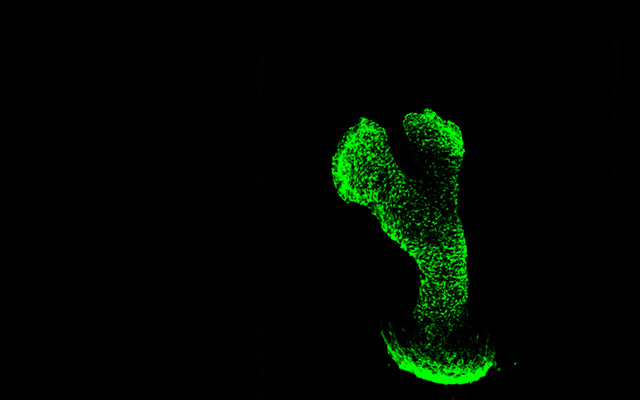Paeoniflorin Inhibits the Bioactivity of Keloid Fibroblasts by Regulating the YAP/TAZ-TGF-β1/Smad Signaling Pathway
CHEN Junchao1, QI Lihua2*
This study aims to investigate the inhibitory effect of paeoniflorin on bioactivity of keloid fibroblasts by regulating the YAP (Yes-associated protein)/TAZ (transcriptional coactivator with PDZ-binding motif)- TGF-β1 (transforming growth factor β1)/Smad signaling pathway. Keloid fibroblasts were extracted from human scar tissue and grouped into Con group, low (PL, 200 μmol/L), medium (PM, 400 μmol/L), high concentration (PH, 800 μmol/L) groups, empty vector (pcDNA3.1)+PH (PH, 800 μmol/L) group, and YAP overexpression vector (pcDNA3.1 YAP)+PH (PH, 800 μmol/L) group. Cell survival, apoptosis, migration, and invasion were detected using MTT, flow cytometry, and Transwell assay, respectively; the expression of TGF-β1, COL III (collagen III) mRNA, MMP-3 (matrix metalloproteinase-3) mRNA, Smad2 mRNA and Smad3 mRNA were detected by qRT-PCR; the expression of TGF-β1, COL III, MMP-3, Smad3, p-Smad2, p-Smad3, Cleaved caspase-3, PCNA (proliferating cell nuclear antigen), YAP, and TAZ proteins was detected by Western blot. The expression of p-Smad2 and p-Smad3 was detected by immunofluorescence. The results showed that paeoniflorin could reduce the fluorescence intensity of p-Smad2 and p-Smad3, reduce the survival, invasion, and migration of keloid fibroblasts and the expression of TGF-β1, COL III, MMP-3, Smad and Smad3 mRNA and protein and p-Smad2, p-Smad3 protein, and induce cell apoptosis. Paeoniflorin inhibited the expression of YAP, TAZ, and PCNA, and increased Cleaved caspase-3 expression, and higher doses of paeoniflorin were better. However, overexpression of YAP reversed the inhibition of paeoniflorin on keloid formation. So, paeoniflorin inhibits the formation of keloid fibroblasts, which may be related to the inhibition of the YAP/TAZ signaling pathway.




 CN
CN EN
EN